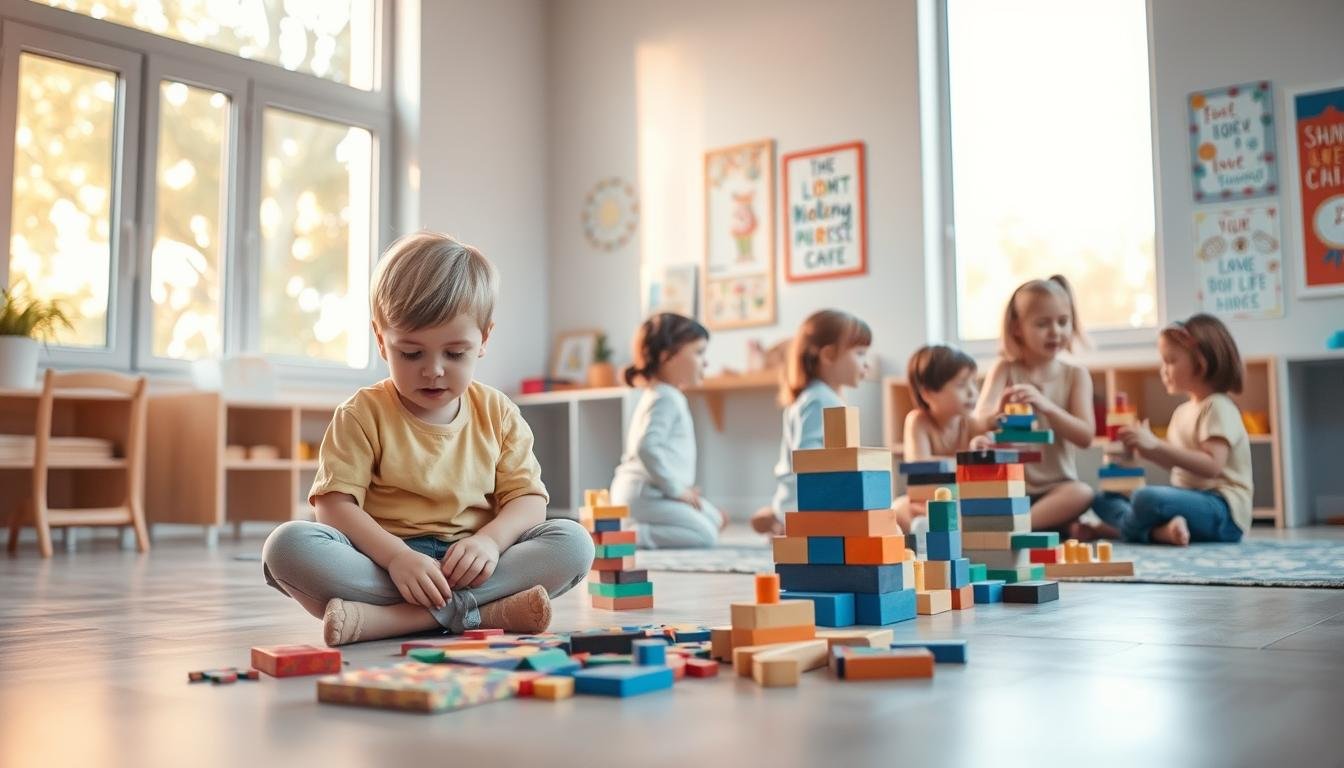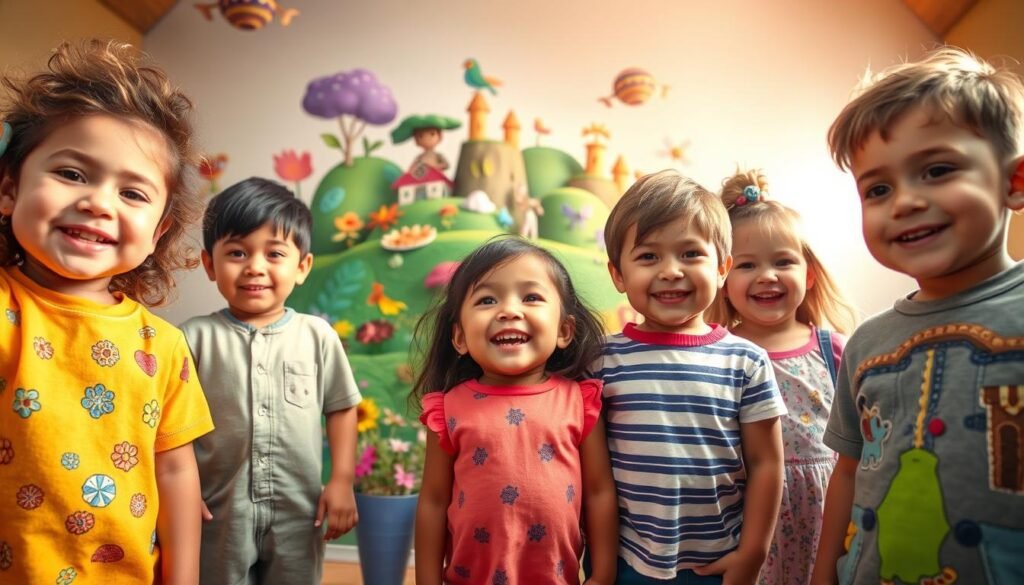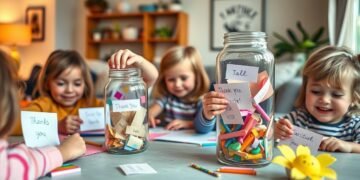Have you ever wondered why some kids thrive while others struggle, even in similar environments? The answer often lies in recognizing and nurturing their unique traits early on. Every young person has distinct qualities that shape their growth, confidence, and future success.
This guide helps parents and caregivers spot these qualities effectively. Real-life examples, like Anna (11) and Javier (16), show how small observations lead to big breakthroughs. Understanding these traits isn’t just about today—it builds resilience and mental well-being for years to come.
From practical observation tips to long-term impacts, we’ll explore 12 key areas. Let’s uncover how to support young minds in reaching their full potential.
Key Takeaways
- Spotting unique traits early boosts confidence and growth.
- Simple observations can reveal significant patterns.
- Nurturing these qualities improves long-term mental health.
- Real-world examples provide actionable insights.
- A structured approach helps track progress over time.
Understanding Behavioral Strengths in Children
Not all abilities are measured by grades—some shine through actions and choices. These behavioral strengths include problem-solving, patience, and teamwork. They shape how kids handle friendships, setbacks, and daily challenges.
What Are Behavioral Strengths?
These traits involve cognitive-social skills like impulse control and empathy. For example, Javier might struggle with math but excels at calming peers during conflicts. Research shows such strengths build self-worth and adaptability.
How They Differ From Academic Strengths
Unlike memorizing facts, emotional strengths develop through practice and feedback. Schools often reward quiet compliance, but traits like creativity need space to grow. Nurturing them requires patience, not just drills.
Cultural biases can overlook kids who learn differently. A strength-focused approach, like Apple Montessori’s, helps every child thrive.
Personality Types and Their Unique Strengths
Personality shapes how kids interact with the world—some recharge alone, others thrive in crowds. Recognizing these differences helps nurture their natural talents. Below, we explore how introverted and extroverted young minds shine.
Introverted Young Minds
Quiet doesn’t mean disengaged. Introverts often show deep empathy and excel as listeners. Their strengths include:
- Deep thinking: They analyze problems thoroughly before acting.
- Creativity: Solitude fuels imaginative solutions, like Markus Trier’s storybook inventions.
- Observation: They notice subtle details others miss.
In some cultures, like Japan, quiet reflection is valued over loud participation. Support them with solo projects and downtime.
Extroverted Energies
These kids light up around people. Their social skills and enthusiasm stand out:
- Communication: They express ideas clearly and persuade peers.
- Teamwork: Group settings hone their collaborative spirit.
- Adaptability: New environments excite rather than overwhelm them.
Extroverts exude natural confidence but may need guidance to listen actively. Balance group activities with reflective tasks.
Both types build resilience differently. Tailor support—introverts thrive with choices, extroverts with structured social goals.
Key Behavioral Strengths of a Child
Every child has unique ways of interacting with the world—some shine in groups, while others excel independently. These patterns reveal critical skills that shape their growth. Below, we explore three foundational traits: cooperation, responsibility, and adaptability.
Cooperation and Teamwork
Group activities, like team sports, highlight a child’s ability to collaborate. For example, a hockey player learns to pass the puck, valuing collective success over individual goals. These moments teach rule-following and shared problem-solving.
In school, group projects refine these skills. Kids who listen and contribute fairly often become natural leaders.
Responsibility and Accountability
Owning up to mistakes builds character. A student who admits forgetting homework learns time management. This accountability fosters trust with teachers and peers.
Small tasks, like feeding a pet, reinforce consistency. Over time, these habits translate into reliability in academics and friendships.
Adaptability to Change
Life rarely goes as planned. A family vacation delay tests a child’s flexibility. Those who adjust without meltdowns show resilience.
New classrooms or routines offer similar challenges. Adaptable kids thrive in uncertain situations, a skill vital for future success.
Emotional Strengths That Complement Behavior
Emotions play a bigger role in success than many realize. These emotional strengths—like bouncing back from setbacks or understanding others—shape how kids learn and connect. When nurtured, they become tools for navigating school, friendships, and life.
Resilience in Facing Challenges
Setbacks, like failing a test, test a child’s grit. Resilient kids analyze mistakes and try again. Sports teach this too—missing a shot means practicing harder, not quitting.
Anna, 11, struggled with math until she viewed errors as learning steps. Her progress shows how resilience turns obstacles into growth.
Empathy and Social Awareness
Caring for pets or noticing a friend’s sadness builds empathy. These moments teach kids to read emotions and respond kindly. A dog’s wagging tail or a sibling’s frown becomes a lesson in connection.
Schools reinforcing empathy see fewer conflicts. It’s a skill that strengthens communities.
Emotional Regulation Skills
Young children rely on adults to calm them. By age 8, many can pause before reacting—like counting to ten when frustrated. This emotional regulation grows with practice.
Serotonin, a brain chemical, stabilizes moods. Activities like deep breathing boost its production, aiding mental health.
Social and Communication Strengths
The way kids connect with others shapes their confidence and success. These social skills—like listening, resolving conflicts, and keeping friends—build strong relationships now and later in life. Small moments, like sharing toys or apologizing, teach big lessons.
Active Listening Skills
True listening means more than staying quiet. Teach kids to reflect with questions like, “What I heard you say is…” This builds emotional intelligence and trust. Anna, 11, improved her friendships by repeating her peers’ words before responding.
Conflict Resolution Abilities
Playground disagreements are practice for life. Books like *Luna Ends Her Conversation* show how to compromise. Role-playing “what if” scenarios helps kids brainstorm fair solutions. These social skills prevent small issues from becoming big problems.
Friendship Maintenance
Keeping friends requires effort. Role-playing conversations (“How would you invite someone to play?”) builds comfort. Tools from Big Heart Toys, like emotion cards, make learning fun. Strong communicators often excel in careers, from teaching to leadership.
How to Spot Your Child’s Behavioral Strengths
Parents often overlook everyday moments that reveal their child’s natural talents. Simple activities like shared meals or playdates become windows into their developing skills. With the right approach, these observations can shape supportive parenting strategies.
Observation Techniques for Parents
Structured watching works best when focused. Set aside dedicated time during routines like homework or pet care. Notice how they problem-solve when their dog misbehaves or collaborate during team games.
Printable strength cards help track progress. Shirley, a mother from Texas, used these to identify her daughter’s negotiation skills during sibling conflicts. Document findings weekly to spot trends.
Noticing Patterns in Daily Interactions
Family gatherings reveal social dynamics. Does your child mediate cousin disputes? Maybe they organize group games naturally. These repeated behaviors signal inherent abilities.
Cultural awareness matters too. Some communities value quiet perseverance over outspokenness. Recognize how background influences what gets noticed.
Identifying Strengths Through Challenges
Difficult situations showcase resilience. When Anna struggled in hockey, her emotions revealed determination. She practiced daily until mastering difficult maneuvers.
Try this 3-step process:
1. Note their initial reaction to obstacles
2. Track adaptation methods
3. Celebrate creative solutions
These approaches help parents support growth effectively today and beyond.
Creating a Strengths-Based Environment at Home
Home is where growth begins—small moments shape lifelong confidence. Families can turn daily routines into opportunities to celebrate progress. Simple strategies, like praise and visual reminders, make a big difference.
Positive Reinforcement Strategies
Specific praise works better than generic compliments. Instead of “Good job,” try, “I noticed how you shared your toys—that was kind.” This links actions to values.
Family meals become strength-sharing hubs. Shirley, a mom from Texas, asks, “What made you proud today?” These chats highlight growth in a natural way.
Strength-Focused Conversations
Use open-ended questions to spark reflection. Ask, “How did you solve that problem?” or “What helped you stay calm?” This builds self-awareness.
Research shows safety boosts brain development. When kids feel heard, they take more risks in learning.
Displaying Strengths Visually
Posters or charts track progress. A “strength wall” with sticky notes celebrates wins like “Listened patiently” or “Tried a new skill.”
Visual tools help kids see their growth over time. This family approach prepares them to navigate the world with resilience.
Activities to Develop Behavioral Strengths
Daily activities shape young minds more than we realize—simple games and tasks build essential life skills. The right exercises can turn playtime into powerful learning moments. Below are engaging ways to nurture key abilities at home and beyond.
Role-Playing Social Scenarios
Pretend play teaches kids how to interact with people. Set up scenarios like sharing toys or joining a game. Ask, “How would you make a new friend?”
Use stuffed animals to practice conversations. This builds empathy and conflict resolution. Many schools use similar methods to reinforce positive interactions.
Team Sports and Group Activities
Soccer, basketball, or choir teach cooperation. These settings help kids learn to communicate and solve problems together. Skills like leadership emerge naturally.
Match activities to personality. Quiet kids might prefer chess club, while outgoing ones thrive in drama. Both develop teamwork differently.
Responsibility-Building Tasks
Chores like pet care teach accountability. Create charts with age-appropriate tasks—feeding fish for preschoolers, walking dogs for teens. Reward consistency, not perfection.
Museums spark curiosity. Ask questions like, “How do you think this invention works?” This builds problem-solving through exploration.
Try this 5-step framework for tough challenges:
1. Identify the issue
2. Brainstorm solutions
3. Pick one to try
4. Test it out
5. Reflect on results
These activities promote growth while making learning fun. Small efforts today create lasting abilities for tomorrow.
When Behavioral Strengths Need Extra Support
Recognizing when a child needs additional guidance is just as important as celebrating their progress. While many challenges resolve with practice, some patterns signal deeper needs. Early intervention can transform struggles into stepping stones for development.
Recognizing When to Intervene
Five key signs may indicate extra support is needed:
- Frequent meltdowns over minor setbacks
- Avoiding tasks they once enjoyed
- Withdrawing from peers or school activities
- Physical symptoms like headaches or stomachaches
- Persistent negative self-talk
Javier’s panic over math tests revealed anxiety. His parents noticed shaking and avoidance—clear cues for action.
Growth Mindset Approaches
Shirley’s coaching emphasizes the power of “yet.” Phrases like “I can’t solve this yet” reframe challenges as temporary. Adults can model this by sharing their own learning journeys.
Praise effort over results. Instead of “You’re so smart,” try “Your hard work paid off!” This builds resilience for future hurdles.
Professional Support Options
Therapists and counselors offer different expertise:
- Therapists: Address emotional distress (e.g., anxiety, trauma)
- Counselors: Focus on skill-building (organization, social skills)
Referral Checklist for Parents:
– Document behaviors for 2–4 weeks
– Consult teachers or pediatricians first
– Ask about evidence-based methods
– Verify insurance coverage
Timely help ensures success isn’t derailed by unaddressed needs.
The Long-Term Impact of Nurturing Strengths
The seeds planted in childhood blossom into lifelong skills that shape futures. Research shows early development of traits like emotional intelligence predicts 58% of career success, outperforming IQ alone.
Academic and Career Benefits
Javier’s story proves this. His childhood conflict-resolution skills led to law school aspirations. Studies link childhood empathy to 40% higher leadership potential.
Workplaces now prioritize EQ. Employees with high emotional intelligence earn 29% more on average. These abilities stem from early social experiences.
Relationship-Building Advantages
Quality relationships start young. Kids who practice active listening maintain 34% more friendships into adulthood. Shared activities build trust that lasts decades.
Family dynamics matter too. Parents modeling healthy relationships raise children who replicate these patterns. The cycle continues across generations.
Mental Health Connections
Resilience learned young reduces anxiety risks by half. Physical health improves too—stress hormone levels drop 27% in adaptable adults.
This protective effect spans life. Older adults with childhood resilience training report 22% lower depression rates. Early investment pays lifelong dividends.
From classroom to career, these foundations shape success. Like Javier, children today build tomorrow’s life skills through everyday moments.
Conclusion
Every interaction holds clues to a young mind’s potential. Like the stories shared here, small moments—whether resolving conflicts or tackling new challenges—reveal how to support every child uniquely.
Start today with simple steps: observe patterns and jot them down. Tools from HerSmile.org offer a way forward, like their free strength-assessment guides.
Remember, growth isn’t about perfection. It’s about progress. By building on strengths, you equip kids to navigate the world with confidence.
FAQ
What are behavioral strengths in children?
These are positive traits that help kids interact well with others and handle challenges. Examples include teamwork, responsibility, and adaptability.
How do behavioral strengths differ from academic skills?
While academic skills focus on learning, behavioral strengths relate to social interactions, emotional control, and problem-solving in daily life.
Do introverted and extroverted kids have different strengths?
Introverted children often excel in deep focus and independent problem-solving. Extroverted kids typically thrive in group settings and verbal communication.
Why is resilience important for children?
Resilience helps kids bounce back from setbacks, manage stress, and persist through difficulties—key skills for long-term success.
How can parents spot their child’s strengths?
Observe how they handle conflicts, help others, or adapt to new situations. Notice patterns in their daily interactions and problem-solving approaches.
What activities build teamwork skills?
Group projects, team sports, and cooperative games teach kids to collaborate, communicate, and respect others’ contributions.
When should parents seek professional support for behavioral development?
If challenges like frequent meltdowns, social withdrawal, or aggression persist despite guidance, consulting a child psychologist can help.
How do strengths impact future success?
Strong social skills and emotional intelligence lead to better relationships, academic performance, and career opportunities later in life.
Can emotional regulation be taught?
Yes. Techniques like deep breathing, labeling emotions, and problem-solving discussions help kids manage feelings effectively.
What’s the best way to reinforce positive behaviors at home?
Use specific praise (“You shared your toys so well!”), create visual charts of achievements, and model desired behaviors yourself.











